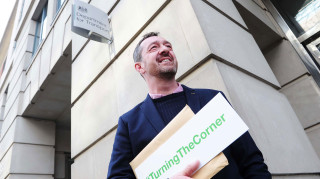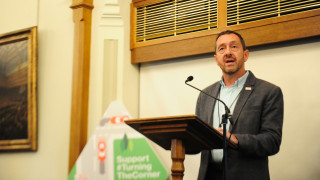When I published my Made to Move report for Greater Manchester in December, a key pledge we made was that the network we create should be one which a 12-year-old would want to use.
This ‘quality measure’ is both literal and illustrative. That 12-year-old is a pensioner wanting to get to the shops a kilometre away, a mum or dad who hasn’t cycled since childhood, a nervous enthusiast or somebody with mobility issues. That 12-year-old standard is one which all of these groups require – the people who are currently making those short journeys by car – if we are to convince them to start walking or cycling. For clarity, 30% of journeys under one kilometre are made in cars.
When I said a network that a 12-year-old would want to use, I chose every word carefully. There are measures I could recommend such as multi-stage crossings of a junction that would keep people safe but take five times longer, but if people don’t want to use them, we won’t get change. People do the easiest thing, so whatever we create must be easy, attractive and safe – all three, in that order, to convince those that don’t cycle already to venture out in significant numbers.
Today I will be presenting my report to members of parliament at the All Party Parliamentary Cycling Group in Westminster. In my role as Greater Manchester’s walking and cycling commissioner I am now setting out what this 12-year old standard actually looks like, putting together design standards for infrastructure that are proven to attract people, ensuring investment is well spent. We want the Department of Transport to help us deliver this vision, let us prove the case, then follow suit, so that all transport investment across the UK meets this standard and allows us to reap the benefits in full.

Our MPs face tough decisions every day, holding the strings to a public purse which has shrunk in size and is being stretched ever more thinly. We can give them the proof they need; the evidence that this kind of investment will give them the very best bang for our collective buck.
And that is important for people charged with making these tough choices, when every penny spent on cycling is a penny not spent on school textbooks, hospitals and housing. We need to show that this is in everyone’s best interest.
Spending on infrastructure which falls short of the 12-year-old benchmark will not deliver anywhere near the level of public benefit. In the worst cases, a white line panted on a busy road will simply waste money that would be better spent given directly to the NHS.
Riding a bicycle or crossing a street shouldn’t require bravery, but after decades of prioritising the interests and needs of the motor car above all else, rectifying the situation in favour of people walking and riding short journeys will initially require enormous political courage.
Creating cycling networks fit for our 12-year-olds won’t come cheaply, but building to a lower standard will cost much, much more.
Britain is the fattest country in Western Europe according to the OECD, with obesity increasing faster than in any other developed nation, placing an unprecedented strain on our NHS. Our polluted air contributes to roughly 40,000 premature deaths here in the UK every year. Traffic jams are costing the economy £9 billion a year. That’s why the 12-year-old test is so important, and why it must be front and centre in our minds when making decisions on investment.





